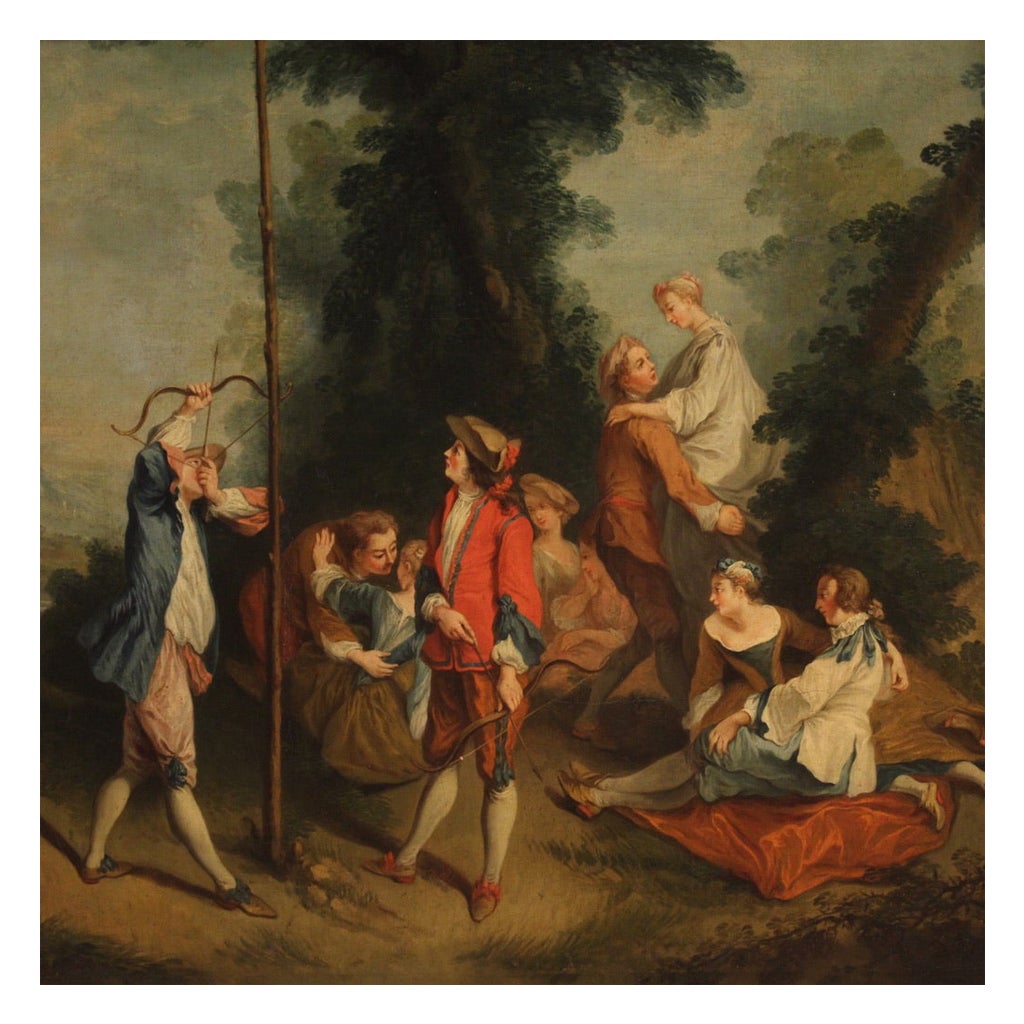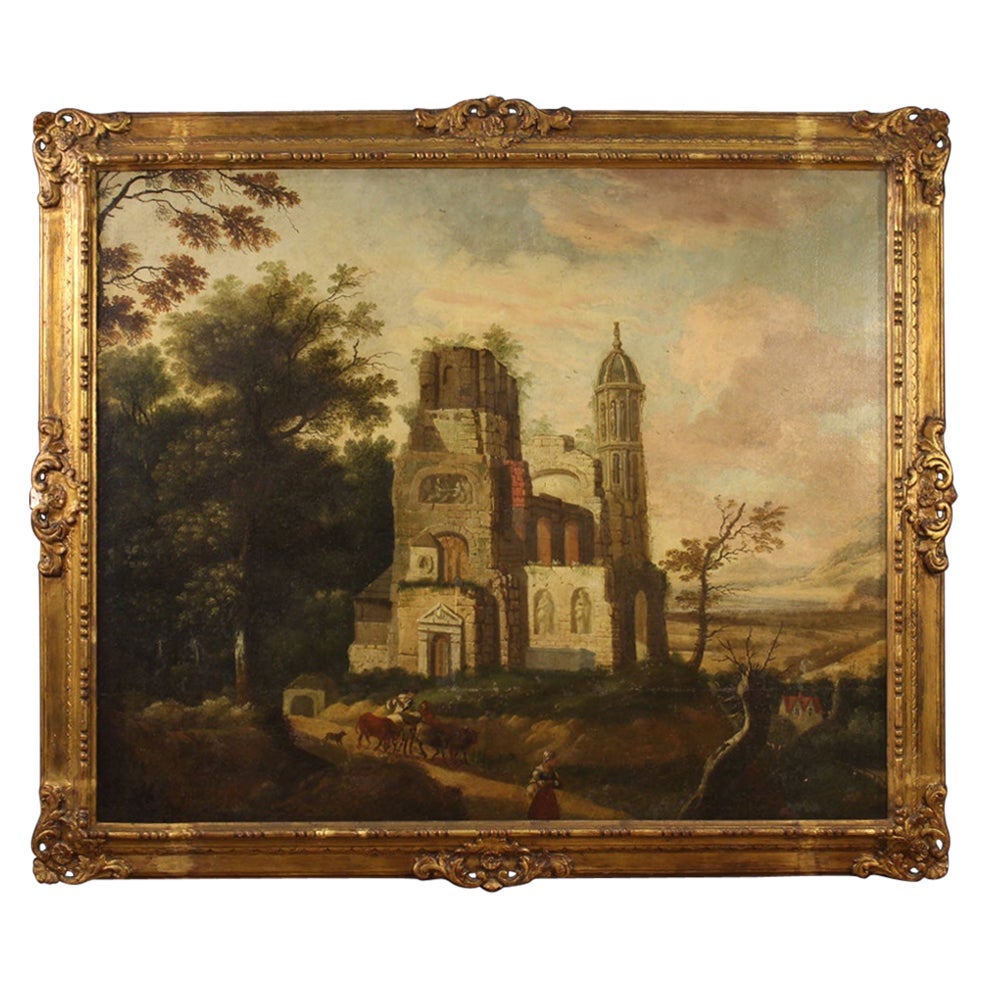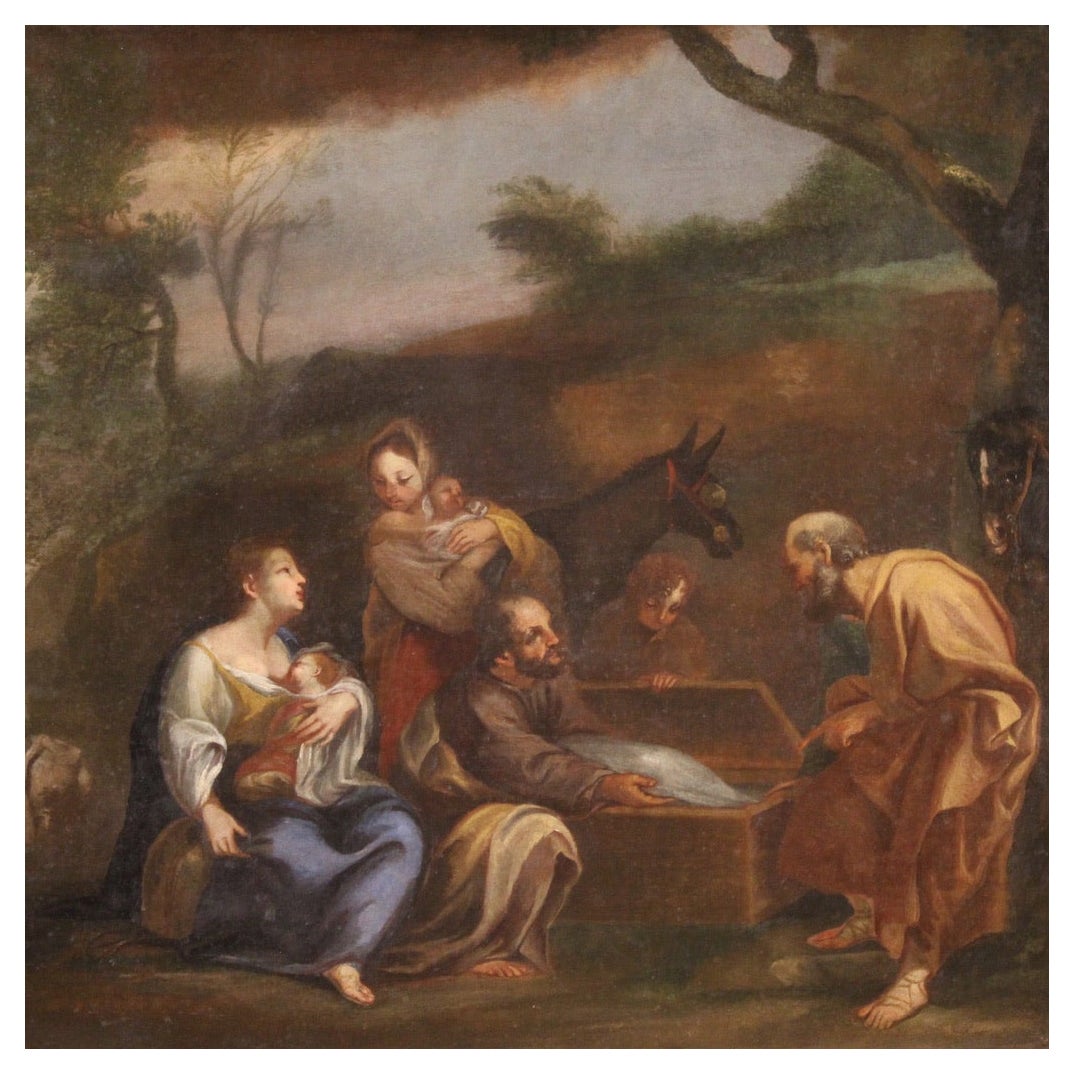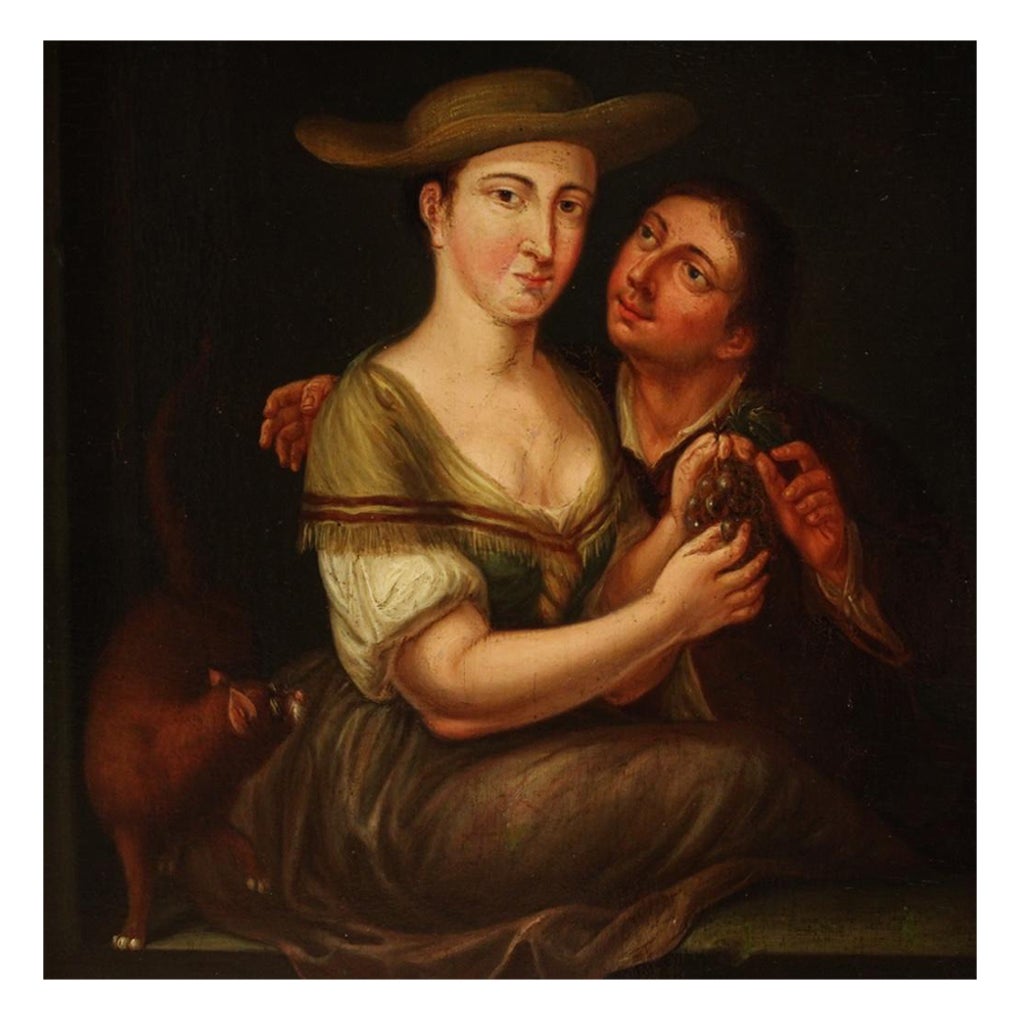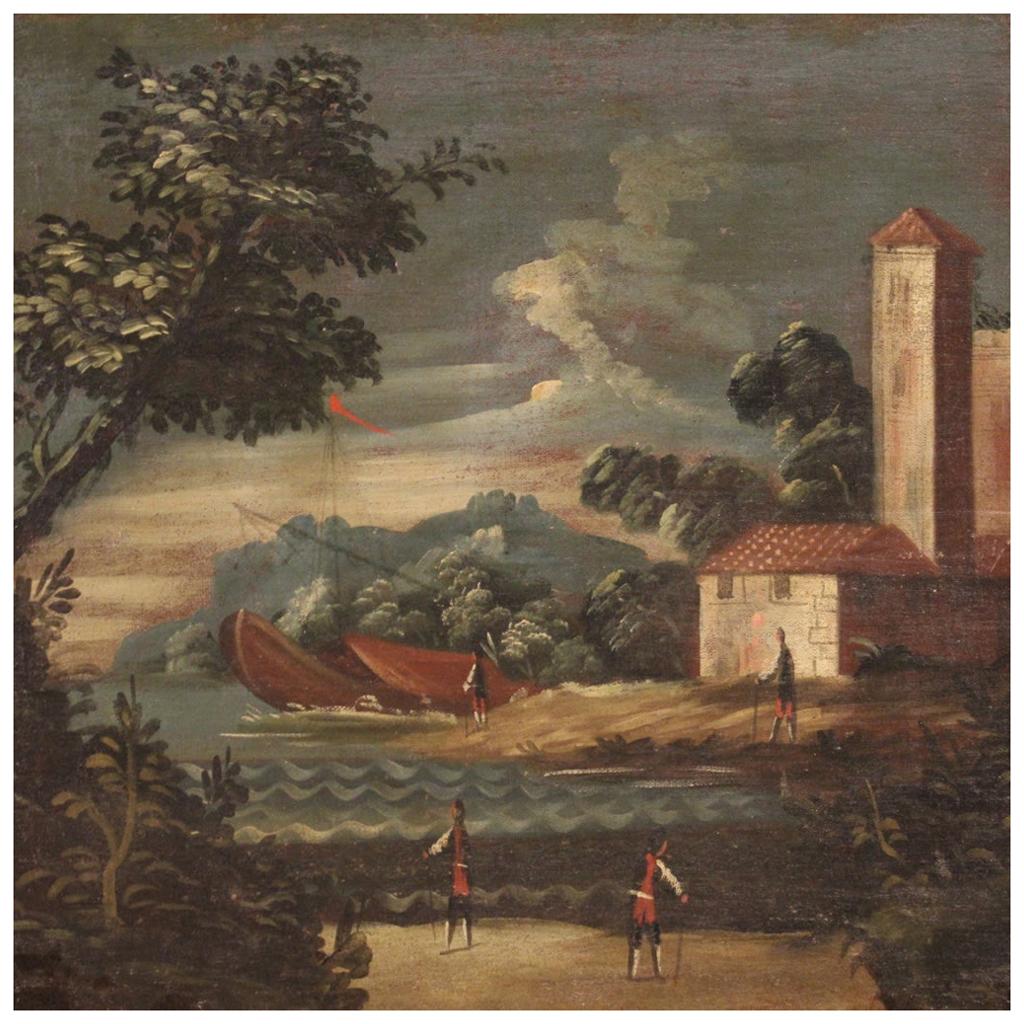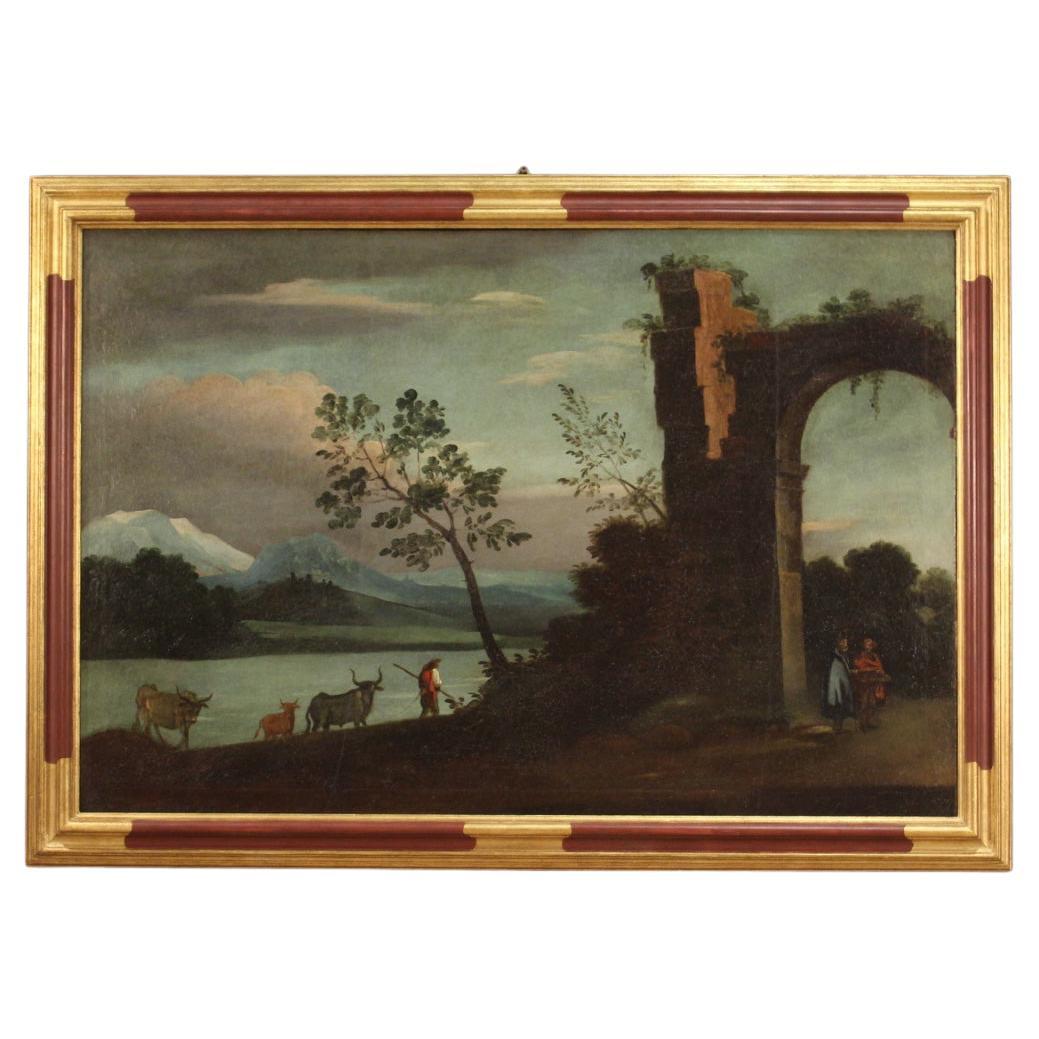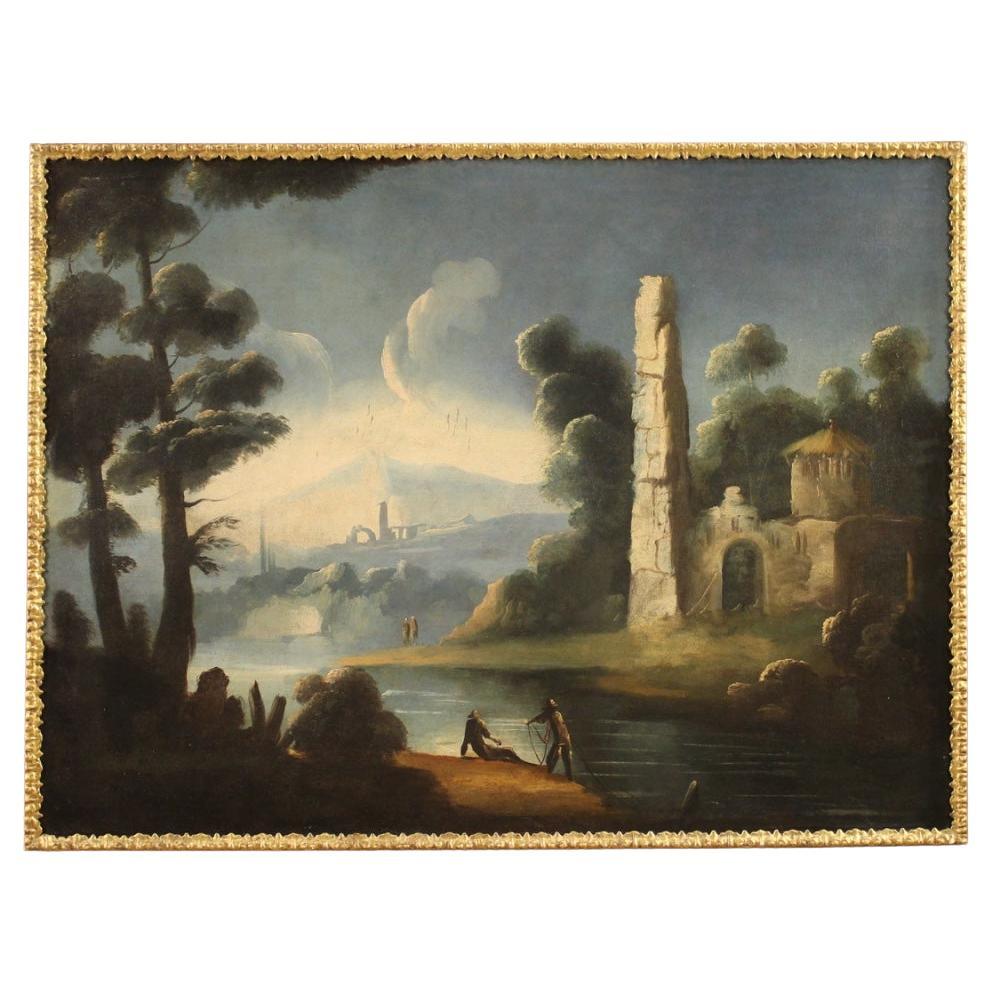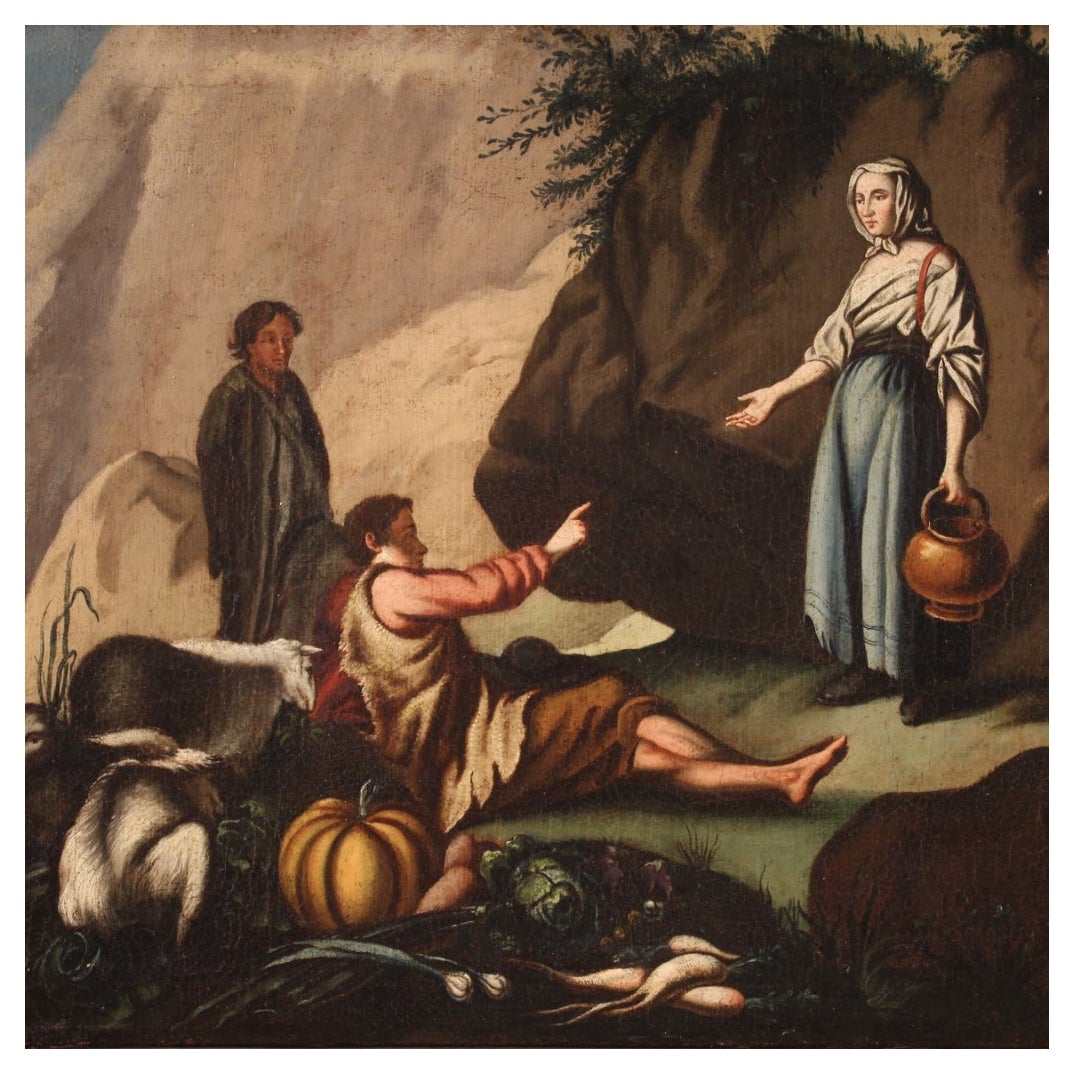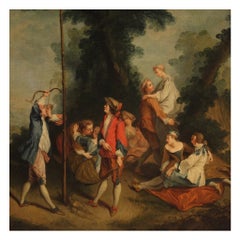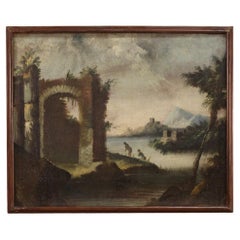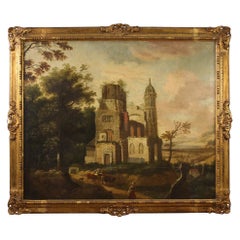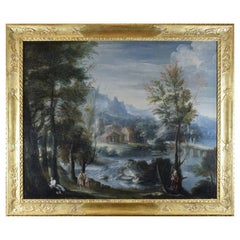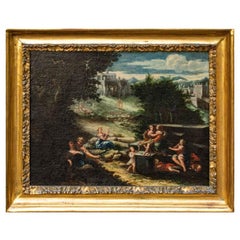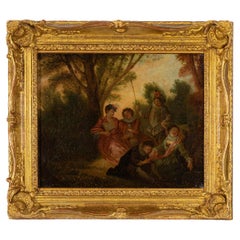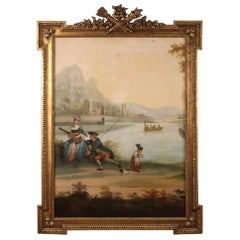
18th Century Oil on Canvas Dutch Antique Gallant Scene Landscape Painting 1770
View Similar Items
Video Loading
Want more images or videos?
Request additional images or videos from the seller
1 of 14
18th Century Oil on Canvas Dutch Antique Gallant Scene Landscape Painting 1770
About the Item
- Dimensions:Height: 71.26 in (181 cm)Width: 51.97 in (132 cm)Depth: 5.91 in (15 cm)
- Materials and Techniques:
- Place of Origin:
- Period:
- Date of Manufacture:1770
- Condition:Repaired: Painting that has undergone a conservative restoration, re-lined, replacement of the frame and color recovery in various points (see photo). In good condition with some signs of the restoration. Wear consistent with age and use. Painting that has undergone a conservative restoration, re-lined, replacement of the frame and color recovery in various points (see photo). In good condition with some signs of the restoration.
- Seller Location:Vicoforte, IT
- Reference Number:Seller: 107161stDibs: LU1848334106422
About the Seller
4.9
Gold Seller
These expertly vetted sellers are highly rated and consistently exceed customer expectations.
Established in 2004
1stDibs seller since 2016
193 sales on 1stDibs
Typical response time: 1 hour
More From This SellerView All
- 18th Century Oil on Canvas French Antique Gallant Genre Scene Painting, 1770Located in Vicoforte, PiedmontAntique French painting from the second half of the 18th century. Oil on canvas artwork depicting a gallant party in the woods, genre scene with characters in the style of Jean-Honor...Category
Antique Late 18th Century French Paintings
MaterialsCanvas
- 18th Century Oil on Canvas Italian Antique Landscape Painting, 1770Located in Vicoforte, PiedmontAntique Italian painting from the 18th century. Framework oil on canvas depicting a landscape with ruins, architectures and characters of good pictorial quality. Small framework, it ...Category
Antique Late 18th Century Italian Paintings
MaterialsCanvas
- 18th Century Oil on Canvas French Landscape Painting, 1770Located in Vicoforte, PiedmontAntique French painting from 18th century. Oil painting on canvas, depicting landscape with ruins and characters of good pictorial quality. Wood and plaster frame of the 20th century...Category
Antique Late 18th Century French Paintings
MaterialsCanvas
- 18th Century Oil on Canvas Italian Antique Bucolic Landscape Painting, 1770Located in Vicoforte, PiedmontAntique Italian painting from the late 18th century. Artwork oil on canvas depicting a bucolic landscape, View with shepherds and animals of good pictorial quality. Painting in a rom...Category
Antique Late 18th Century Italian Paintings
MaterialsCanvas
- 18th Century Oil on Canvas Italian Antique Landscape Painting Pastoral SceneLocated in Vicoforte, PiedmontAntique Italian painting from the 18th century. Artwork oil on canvas depicting a bucolic landscape, pastoral scene with chariot of good pictorial quality. Small painting adorned wit...Category
Antique Mid-18th Century Italian Paintings
MaterialsCanvas
- 18th Century Oil on Canvas Italian Antique Genre Scene Landscape Painting, 1760Located in Vicoforte, PiedmontAntique Italian painting from the 18th century. Oil on canvas artwork depicting a particular classic genre scene on a bucolic landscape of good pictorial quality. Painting of good size and pleasant furnishings with a non-coeval wooden frame, from the 20th century, carved, gilded and silvered. Frame with fabric passe-partout with some small signs of wear. Artwork of pleasant perspective and good brightness, finely represented characters in classic clothes...Category
Antique Mid-18th Century Italian Paintings
MaterialsCanvas
You May Also Like
- Italian Landscape Oil on Canvas Early 18th Century Gold Frame Venetian SchoolLocated in Prato, ITVeneto, Italy, early 18th century Oil on canvas 20th century frame carved and gilded in pure gold Dimensions: cm W 93 x H 78,5 x D 5.Category
Antique Early 18th Century Italian Paintings
MaterialsCanvas, Wood
- 17th Century Rural Landscape with Gallant Scenes Painting Oil on CanvasLocated in Milan, IT17th century, Emilian school Rural landscape with gallant scenes Oil on canvas, 37 x 47.5 cm With frame 61 x 50.5 cm The bucolic amenity of the present is reflected in the joyful gallant scenes that dot its surface. The locus amoenus described reflects on the more traditional inflection of Arcadia, which in the literary transfiguration was the scenario par excellence of the most carefree pastoral life and out of this world; the painting is therefore a forerunner of what was professed by the actual poetic academy of Arcadia which was established in Rome in 1690, but enthusiastically testifies to the feverish invitations to its acceptance, then widespread in the most avant-garde cultural salons throughout Italy. First Theocritus and Virgil later had awakened with Idilli and Bucoliche that capacity typical of the natural world to allow an escape from reality; the contemplation of perfect natural fruits that followed would have evoked in the spirits of dreaming men back to origins. The bucolic landscape was able to positively give a rhythm to material life, and constituted the concretization of a place devoid of incivility and ugliness, where only dreams, wild music and homages to fruitful nature were allowed. In the present painting widespread figures of shepherd children trace the same intent to the sublimation of earthly life, gathered in pairs, while children on the model of the ancient cherubs cheer the field with flowers and petals. The games of these and the sweet affections of the other characters are rendered through liquid and vibrant brushstrokes, flickering with a white light that opposes the dark shadow of the undergrowth. In the distance, the sky tapers with a silvery and flat brushstroke, while the vertical development of the promoters with architectures helps to introject a bright beam of light into the grassy clearing. The foliage and the turf of the landscape piece are rendered through a digital brushstroke, betraying the Italian brand of the present, influenced at the same time by the seventeenth-century European influences that then conveyed to the capital. The evocative culture of the city attracted many artists from the city of Bologna, from the Italian north but also from the territories beyond the Alps, such as Claude Lorrain and Nicolas Poussin. The historical-artistic heritage of the Italian pastoral scenes was thus able to fill up with the more functional and particular formalisms of the charms coming from elsewhere, such as the expressive tremor of the present, similar to the contemporary French lexicon. The typological restitution from pastoral idyll, in accordance with the intrinsic stylistic qualities of the work, allows us to specify the solid belonging of the present to the Italian hand, similarly to what was then emerging in the pictorial sphere within the Emilian school. In this regard, we should recall the latent influences of two decisive foreign landscape painters who passed through the Emilian belt, such as Claude Lorrain (1600-1682) and Nicolas Poussin (1594-1665); before them, Giovanni Battista Viola...Category
Antique 17th Century Italian Paintings
MaterialsCanvas
- Gallant Scene Painting by Philippe Mercier, 18th CenturyLocated in Lisbon, PTAn 18th century painting of a gallant scene in a park. Attributed with seal of painter's studio to Philippe Mercier (1689 to 1760) from the circle of the french painter Nicolas Lancret, a follower of the École of Antoine Watteau. Oil on canvas, in a fine carved giltwood frame. Frame: Width: 16,53 in (42 cm) Depth: 14,56 in (37 cm) Canvas: Width: 12,99 in (33 cm) Depth: 10,62 in (27 cm) Philippe Mercier (Berlin 1689 – London 1760) born in Berlin and studied at the Berlin Akademie with Antoine Pesne before traveling to Italy and France. By the time he arrived in London in 1716, had considerable familiarity with the work of contemporary French painters, particularly Watteau and his sophisticated style. Soon won Watteau patronage in court circles. In 1726 painted two important group portraits that can be seen as an introduction to English art - Baron Schultz and his friends (1725, Tate Gallery, London) and Viscount Tyrconnel with his family (1725-6, private collection). In 1729, Mercier was appointed Chief Painter to Frederick, Prince of Wales, and, a year later, keeper of his library, but they seem to have fallen away in the latter half of the 1730s, when he retired to the country, where painted several portraits for the Samwell family of Upton, Northants, and Hesilriges of Noseley, Warwicks. In 1739 Mercier moved to York, where he built up a considerable portrait practice among the leading families in the county. It was at this time that he made his greatest contribution to British painting, introducing and developing the 'extravagant image', a genre derived from Chardin as well as Watteau and 17th-century Dutch genre painting. Described by George Vertue as "bit of some conversational figures as large as life: vain plaisant Fantasies and habits: mixed modes very well done – and very approved", such works were frequently recorded and clearly enjoyed considerable success. Painted in the second half of the 1730s, the present work, An Allegory of Taste, is a fine example of this way of painting and its Rococo sensibility reveals the artist's affinities with contemporary French art...Category
Antique 18th Century French Baroque Paintings
MaterialsCanvas
- Antique Oil Painting on Canvas Coastal Scene with Galleons, 18th centuryLocated in Casale Monferrato, ITBeautiful antique marine oil painting on canvas, 18yh century. Excellent pictorial quality. Large antique Italian painting beautiful marine scene a coast with some large galleons arr...Category
Antique 1750s Italian Paintings
MaterialsCanvas
- 18th Century Oil Painting On Canvas Of LandscapeLocated in Firenze, ITBeautiful oil painting on canvas depicting a landscape with figures and carriages. Veneto, 18th century. The background of the painting is dominated by a picturesque Venetian landsc...Category
Antique 18th Century Italian Paintings
MaterialsPaint
- Oil on Canvas Arabian Horse PaintingLocated in London, GBA fine Arabian horse painting on a sky blue background signed lower left, Circa 1970 - 80. Dimensions: H: 88cm, W: 79cm. Canvas: H: 79cm,...Category
20th Century Asian Paintings
MaterialsCanvas
Recently Viewed
View AllMore Ways To Browse
Antique Dog Oil
Antique Oil Painting Of Dog
Antique Oil Painting Girl
Antique Oil Painting Of Girl
Antique Dutch Landscape Oil
Gallant Paintings
Scene Gallant
Herman Miller Desk Chair Used
Herman Miller Desk Chairs Used
Jacobsen Antonio
Marly Christofle
Classic Glass Cabinet
Vintage Adornments
Arch Ring
French Louis Xvi Style Marble Top Commode
Antique Cherry Chest
Antique European Chest
Deco Inspired Rugs
